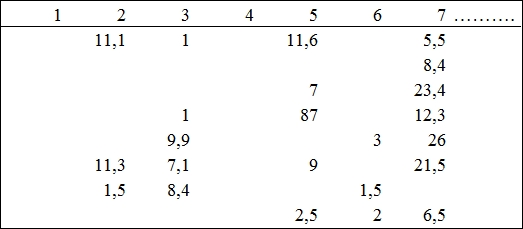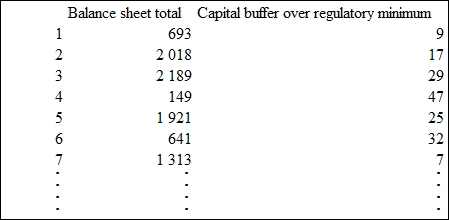In this chapter, we will use a fictional banking system and its interbank deposit market. We use this market as it usually has the biggest potential loss because these transactions are not collateralized.
For this analysis, we need a connected network, so we constructed one. This network should contain information on the exposure of banks against each other. Usually, we have data on the transaction, like in Table 13.1. Since the average maturity of transactions is very low on the interbank market, it is also possible to use this data. For example, we can construct the network by using the average monthly transaction size between every pair of banks. For this type of analysis, only the partners of each transaction and the contract sizes matter.

Table 13.1: The data set of the transaction
With all this information, we can put together the matrix of a financial market (which can be visualized as a network).

The matrix used
The first step will be the core-periphery decomposition of the matrix. In this case, we will only need the so-called adjacency matrix A where  .
.
The simulation method will be a bit more complicated since we will need some more information, both about the banks and the transactions. Instead of using the adjacency matrix, we will need a weighted matrix W, where the weights are the transaction sizes:

Figure 13.2 shows the weighted network of the examined market in the sample period:

Figure 13.2: The network of the interbank deposit market
We will also need some bank-specific information. Vector C will contain the information about the bank's capital position. Ci shows the capital buffer of bank i over the regulatory minimum in the given currency. Of course, it is a matter of decision whether the capital buffer or the whole regulatory capital is considered during these exercises. In our view, it is better to use capital buffer since if a bank loses the entire buffer, the supervisory institution will make some steps. Vector S will contain the size of each bank. Si will then be the balance sheet total of bank i.

Figure 13.3: Vectors of capital position and size
